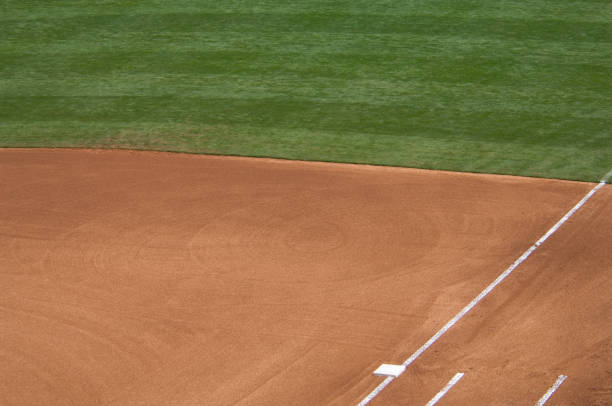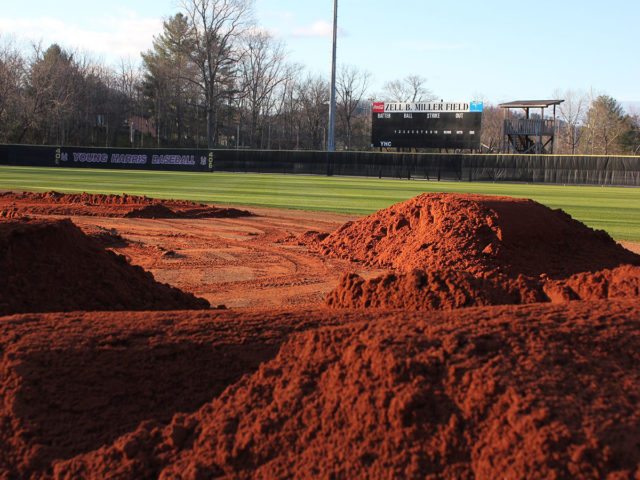How to Maintain Baseball Dirt in 2026 for Long-Lasting Playability?
Baseball has been much more than bats and gloves. It is the feel of the field under your cleats, the sound of the ball being caught by the mitt, and the beat of the game. But behind every smooth play and clean bounce is one thing: well-kept baseball dirt. In its absence, games would become stagnant, players would be in danger of being injured, and the fun of playing would be undermined.
Field maintenance, in 2026, is not about retro shortcuts. It is being familiar with what works, having a schedule, and material usage. We will explore ways to maintain your field throughout the season.

Why Good Maintenance Matters
A safe, smooth field protects players from rolled ankles and awkward slides. It also makes the game look and feel professional. Poor upkeep, on the other hand, means dust storms, puddles, and unpredictable ball hops.
Consistent maintenance is like insurance. You don’t notice it when it’s done well, but you’ll see the problems instantly when it’s ignored.
Daily Routines That Keep Fields Fresh
1. Raking and Dragging
After every game or practice, drag the infield. This prevents grooves and keeps the surface even. Use a nail drag first for depth, followed by a mat drag for a polished finish.
2. Spot Repairs
High-use spots like home plate and second base wear down quickly. Don’t wait for holes to grow, patch them right away. A few minutes of repair saves hours of work later.
3. Smart Watering
Dust control and softness depend on moisture. A light spray before and after games helps, but don’t overdo it. Damp, not soggy, should be your target.
Weekly and Monthly Habits
Add Fresh Material
Play, wind, and rain gradually shift baseball dirt away from where it’s needed. Top off low areas regularly and keep the infield flush with surrounding grass.
Edge Management
Grass will creep if you let it. Trim and reshape edges monthly to keep your infield looking sharp.
Compaction Checks
If your field feels like concrete, loosen it up. Aeration tools break up compacted areas and let water soak in better. This prevents puddles and keeps play safe.

Weather-Proofing in 2026
Climate changes mean groundskeepers have to be quick on their feet.
- Rain: Always tarp key spots before storms. Afterward, remove standing water without dumping random fillers.
- Heat: Fields dry out faster now. Water lightly but often to avoid dust bowls.
- Cold: Never drag frozen surfaces. Wait for thaw, then rake gently.
Using the Right Base Materials
The base of your field is its foundation. If the bottom layers aren’t stable, everything on top will shift faster. That’s where products like Regular Road Base come in handy. It creates a firm underlayer, helping the surface stay level longer, even after heavy play.
Pairing a stable base with the right mix of clay and sand on top makes maintenance much easier.
Technology and Tools You Can Use
Even smaller fields can benefit from better tools.
- Moisture sensors can tell you when the field is too dry.
- Quality drags and rakes save hours of labor.
- Tarps and covers protect high-wear zones during storms.
Technology may not replace hands-on work, but it helps you make smarter decisions.
Mistakes That Shorten Field Life
Avoid these common errors if you want your infield to last:
- Overwatering to the point of mud.
- Ignoring edge growth until the grass takes over.
- Leaving small holes unfilled.
- Using cheap fill instead of proper mixes or base materials.
Every shortcut adds up, and eventually, the field pays the price.

The Role of Trusted Suppliers
Not all dirt or aggregates are equal. If you cut corners on material quality, you’ll be fighting your field every season. That’s why choosing a reliable supplier makes such a big difference.
Western Materials has been in the game for over 40 years, serving California with sand, gravel, infield mixes, and more. Their products are trusted by contractors, schools, and sports facilities across the state. If you’re serious about keeping your field ready for play, they’re a name worth remembering.
Conclusion
A well-maintained field doesn’t happen by accident. It comes from steady care, smart planning, and the right foundation. With daily raking, monthly edging, and a reliable supply of fresh material, your field can handle everything the season throws at it.
And don’t forget the base. Beneath the surface, Regular Road Base provides the stability your infield needs to stay smooth and level. Combine it with consistent upkeep and you’ll extend your field’s lifespan by years.
Baseball is about creating spaces where players of all ages can enjoy the game safely and fully. With the right approach, and the right materials, your field won’t just survive another season. It’ll thrive. And yes, Road Base plays a big part in making that possible.
FAQs
Q1. How do you maintain baseball dirt for better playability?
A: You maintain baseball dirt by dragging the infield daily, watering lightly to reduce dust, and repairing holes quickly. Consistent upkeep keeps the surface safe and smooth.
Q2. What tools are best for baseball field maintenance?
A: The most useful tools are nail drags, mat drags, rakes, tarps, and moisture meters. These help level the surface, protect high-use areas, and control compaction.
Q3. How often should you water a baseball infield?
A: Water lightly before and after games to keep the dirt damp but not muddy. Frequency depends on weather, but in hot conditions, daily watering is usually needed.
Q4. Why is edge control important on baseball fields?
A: If grass creeps into the dirt areas, it creates uneven surfaces and bad bounces. Trimming edges monthly keeps the field level and safe for play.




.png)
.png)
.png)

.png)
.png)


